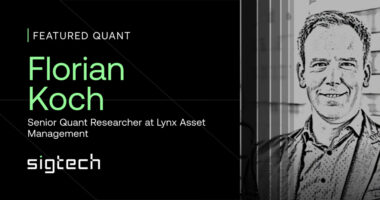In this edition of SigView – A Quant’s Perspective we have the privilege to speak with Saeed Amen. Saeed is a seasoned quant and a renowned expert in applying machine learning and alternative data to understand and forecast macroeconomic trends and financial markets. With his latest venture Turnleaf Analytics, he is focusing on inflation forecasting.
We hope you enjoy the conversation!

Tell us about your background as a quant.
I started as a quant strategist working at Lehman Brothers and later at Nomura, in FX, focusing on developing systematic trading strategies in cash and volatility. Over the past decade I’ve been working independently and recently co-founded Turnleaf Analytics. I’m also a visiting lecturer at Queen Mary University of London.
Tell us about Turnleaf Analytics.
Turnleaf Analytics was co-founded by Alexander Denev and I just over a year ago. Our focus is using machine learning and alternative data to forecast macroeconomic and financial market variables. Our current focus is on inflation forecasting.
What are your core principles when building quant models? What makes them unique?
Data is important. I doubt any quant would disagree with that. At the same time, I think it’s important to have a deep understanding of the problem at hand and its potential drivers. Possessing specific domain knowledge helps greatly when curating datasets, ensuring you spend your time on the most relevant data. At Turnleaf, our unique approach has been to apply our expertise to the curation of our data pipeline, thereby avoiding the need to troubleshoot isolated steps later on.
What are the latest technological advancements you are making use of in your research? And, what opportunities, and challenges, do AI and machine learning offer investment managers?
We are using machine learning extensively in our forecasting models. We find that it helps to identify the nuances of a measure like inflation better than similar, purely linear models. In regards to forecasting, we have stayed in the shallower end of the machine learning spectrum.
One area where deep learning has been very successful is in the area of computer vision and NLP, which is useful for investment managers looking to extract value out of alternative data which consists of images (e.g. satellite images) and text (e.g. newswires).
What are the key challenges you see investors facing in their day-to-day operations when developing and maintaining quant models?
There are many things to monitor. In particular, ensuring that datasets are always up to date and relevant to the problem at hand. You also need to monitor performance and understand periods where it might be underperforming (or indeed, outperforming). Is the performance within expected historical parameters or has there been some sort of structural break in the model?
What is your take on alternative data and its potential on the investment management industry?
Alternative data can help fill the gaps in our understanding of financial markets and the economy. It can help provide more timely insights than traditional data. The key point is that alternative data helps to augment existing data, as opposed to replacing it.
What datasets do you currently find particularly interesting to research?
When forecasting inflation we use many different datasets. Macroeconomic datasets are crucial, as are those drawn from financial markets. We also use lots of alternative data, which has helped to enhance the accuracy of the models. Some interesting alternative datasets we use include pollution data, which can be used as a high frequency proxy for industrial production.
Where do you see the most promising opportunities to generate alpha in the current market environment?
In the current environment, where central banks are very active, macro based strategies are likely to be successful at generating alpha. Having a good forecast for inflation is key to this.
How has the acceptance of quant investing among institutional investors changed over the past decade? And, how do you see this trend developing?
When I started my career, quant was very much a smaller area. I do think there is more acceptance of the area in general these days. Discretionary investors are also embracing elements of quant in their analysis. At the same time, quants are trying to get ideas from discretionary sources. There seems to be increasing convergence between quant and discretionary.
Disclaimer
SigTech is not responsible for, and expressly disclaims all liability for, damages of any kind arising out of use, reference to, or reliance on such information. While the speaker makes every effort to present accurate and reliable information, SigTech does not endorse, approve, or certify such information, nor does it guarantee the accuracy, completeness, efficacy, timeliness, or correct sequencing of such information. All presentations represent the opinions of the speaker and do not represent the position or the opinion of SigTech or its affiliates.







